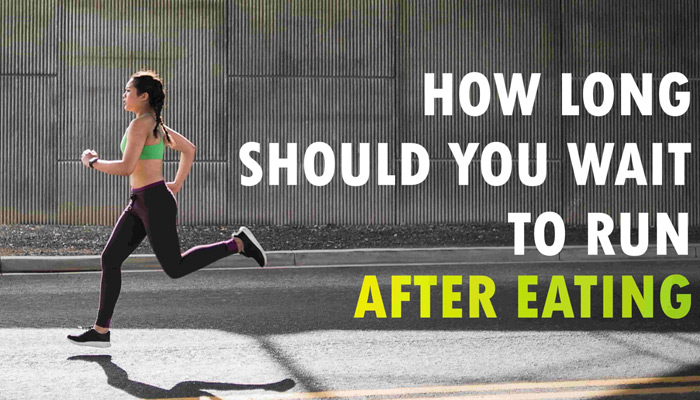
Knowing when (and what) to eat before a workout is a fine art. If you wait too long to exercise after eating, you risk not having enough energy to crush your workout. But if you jump into your workout before your meal has finished its digestive trek, there is the potential for unwanted stomach cramps for the duration of your workout. So… exactly how long should you wait to exercise after eating?
Find a happy medium between the two extremes with these expert tips.
How to Manage Working Out After Eating
It’s usually a good idea to give yourself at least 90 minutes (up to 2.5 hours) between the end of your meal and the start of your workout, says Michele Olson, Ph.D., professor of exercise science at Auburn University in Montgomery, Alabama.
Depending on what your meal consists of (and some individual variables in digestion), this is approximately how long it may take for your meal to travel through your stomach and into the small intestine, where the water and nutrients are delivered to your bloodstream for use throughout the body, Olson says.
So waiting 90 minutes to exercise after eating is a good place to start… but use it as more of a suggestion than a hard-and-fast rule. Play around with that timing a bit, and you’ll eventually learn what works best for your body, in terms of timing and the kind of food you eat. Because again, digestion speeds vary depending on the person and the food being digested. Everyone is different!
What to Eat Before Exercise
In addition to how long you eat before working out, what you eat before exercise also matters. Eating the right foods at the right times will increase your chances of having a great workout, while decreasing the chances of stomach cramps, bloating, and nausea.
Protein and Carbs
In general, aim to get a mix of carbs and some protein in your pre-workout meal or snack, “but try to eat foods that are easy to digest, such as yogurt or eggs as a protein source, and fruit or a whole wheat bagel as carb sources,” Olson says.
But not all workouts require the same kind of fuel beforehand. Long workouts (60 to 90 minutes) and/or moderate to high-intensity (65 to 80 percent of your VO2max) workouts are believed to rely more heavily on carbs than shorter, lower-intensity workouts, according to a 2017 review in the Journal of the International Society of Sports Nutrition. Depending on what category your workout falls into, you’ll want to adjust your pre-workout foods accordingly.
Fat and Fiber
Remember to use a light touch with fat and fiber, as these nutrients tend to take longer to digest and have an increased potential to cause indigestion. “It takes these types of foods longer to digest, so they may not be fully delivered to your bloodstream [by the time you start your workout],” Olson says.
Water
Don’t forget to hydrate! Be sure to drink plenty of water before your workouts, as well.
Be sure to drink a glass of water with your pre-workout meal or snack, and then drink another glass about an hour later. “Then, 20 minutes prior to sweating, drink about half a cup of water,” Olson says. “This last bit will have just enough time to clear the stomach and enter the blood for ready use.”